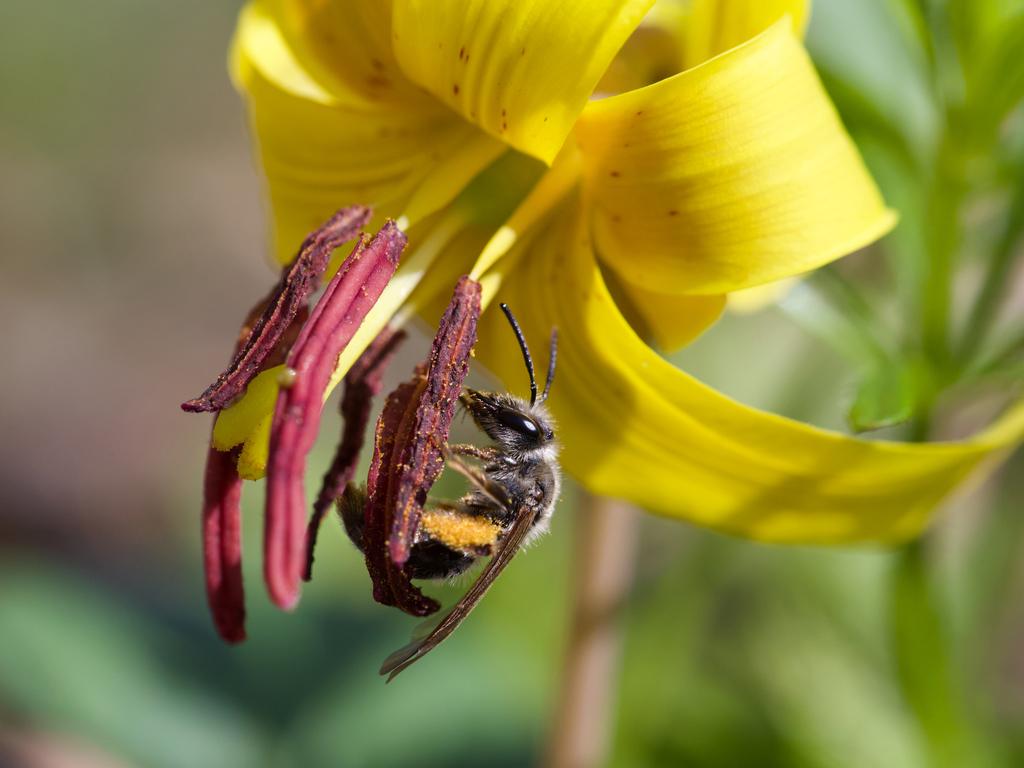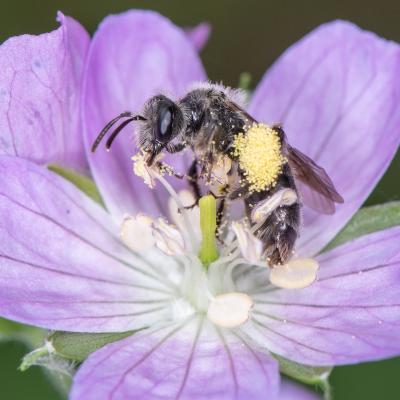
A trout lily mining bee. (Photo: Nevin Cullen 2022)
Did you know that our forests provide important habitat for bees and other pollinators? At a recent forestry meeting, Forest Society foresters learned all about this topic from Kass Urban-Mead of the Xerces Society. While we often think of bees as only utilizing flowers in our gardens or fields, our forests provide critical habitat features to these important pollinators.
A new study estimates that one-third of our native bees in the northeast are forest specialists, taking advantage of the nectar and pollen produced by trees and spring ephemerals in the forest understory. Another third are specialists to open habitats such as fields and meadows, and the final third are generalists, using both types of habitat.

Most native species are solitary bees, where only a single female bee takes care of a nest, and is only active for only 4-6 weeks each year. Solitary bees emerge as adults, create a nest (commonly in cavities, soil, or dead wood), and must collect enough pollen to feed the next generation of bees in the few weeks before they die. They lay eggs on the pollen they collect, which hatch, eat the pollen, and then overwinter (often as pupae).

Because solitary bees have short flight periods, they sometimes specialize on plants that bloom during their adult lives. Many forest-associated solitary bees are active in spring and specialize on spring ephemeral flowers. For example, the trout-lily mining bee almost exclusively feeds its young on trout lily pollen!
Sustainable management of our forests for health and diversity can benefit many species of wildlife, including bees and other pollinators!
- See more pollinator photos on Heather Holm's website. Holm is author of Pollinators of Native Plants, Bees, Wasps, and Common Native Bees of the Eastern United States.
